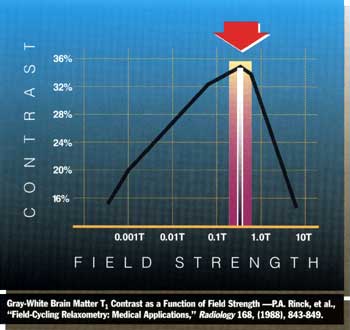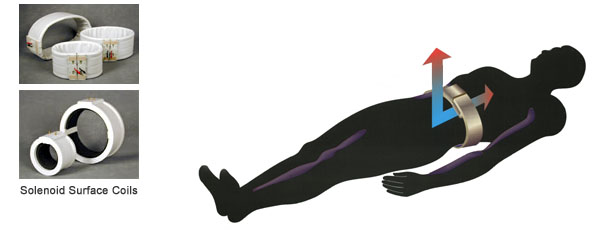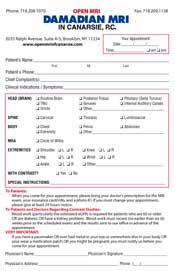Damadian MRI in Canarsie, P.C.
2035 Ralph Avenue, Suite A-5
Brooklyn, NY, 11234
[Scott Medical Center Building]
Tax ID: 11-3196096 NPI: 1962593061
The QUAD™ 12000
Your patients will love it. It’s open on all four sides; it’s non-claustrophobic; the patient aperture is huge; and it’s quiet. Because they’re comfortable, patients are able to lie still throughout their exams, thereby largely eliminating motion artifacts that so readily plague other MRIs.
Excellence in Image Quality
The QUAD™ 12000 operates at 0.6 Tesla, making it roughly twice
as powerful as most other open MRIs and ten times as powerful as some.
 This means that its images are rich in signal-to-noise (S/N), the primary
ingredient for excellent image quality.
This means that its images are rich in signal-to-noise (S/N), the primary
ingredient for excellent image quality.
Another essential ingredient for excellent image quality is contrast-to-noise (C/N), the quality that enables the reading radiologist to distinguish neighboring tissues. A well-known relaxation study conducted in Europe clearly shows that C/N is a function of the strength of the scanner´s magnetic field. As you can see from the graph, our 0.6 Tesla MRI operates at the peak of the curve, meaning it reaps optimal contrast. Note that as field strength approached 1.0 Tesla, C/N drops off precipitously.
The Vertical Field Advantage
The QUAD™ 12000 uses solenoid surface coils, which are high-gain antennas typically housed in soft, pliable "belts" which are wrapped around the exam region.

Optimal contrast is achieved when the directions of the magnetic field and the axis of the surface coil are perpendicular.
As illustrated, when the patient is lying down, the direction of the axis
of the surface coil (an imaginary line that runs along the center of belt
coil) is horizontal, regardless of whether scanning the abdomen, head,
lumbar spine, knee, etc. [Our full array of coils enables us to scan every
region of the body.] Now notice that the direction of the magnetic field
of the MRI scanner is vertical. Therefore the surface coil axis is always
perpendicular to the scanner´s magnetic field. This is an ideal
arrangement because it is a fundamental fact of physics that optimal signal-to-noise
(S/N) is achieved when the directions of the receiver coil axis and the
scanner´s magnetic field are perpendicular. For this reason, our
0.6 Tesla MRI is signal-noise-comparable to a supercon at twice the strength,
i.e. 1.2 Tesla, or 12,000 Gauss, which explains why FONAR named the product
the QUAD™ 12000.
High-field supercon MRIs have horizontal magnetic fields, so they cannot use solenoid surface coils and must settle for less efficient designs, such as saddle-shaped receiving coils.

